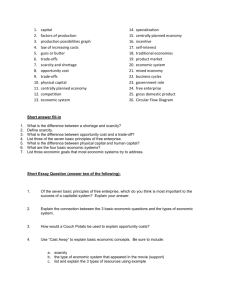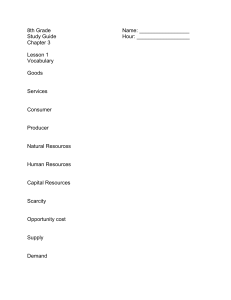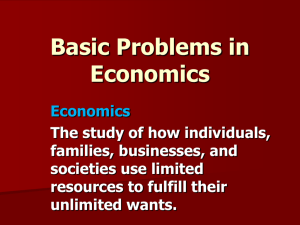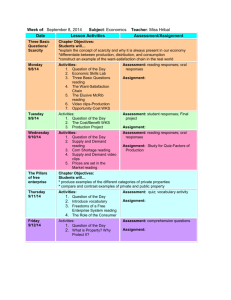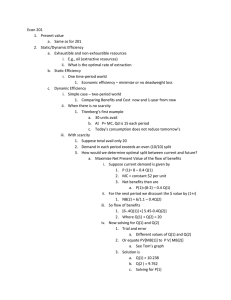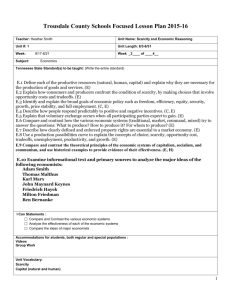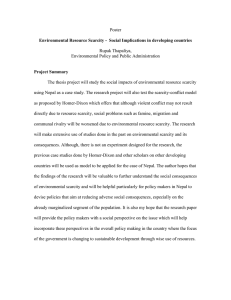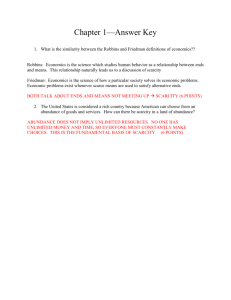Chapter 2–Setting Priorities and Goals
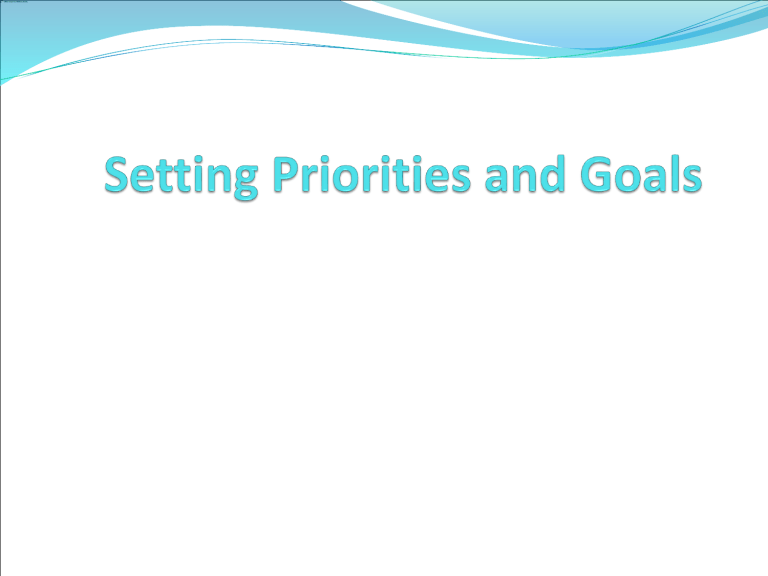
Section 2.1
What is Most Important!!
Priorities—Your judgment about the relative importance of the alternatives.
Need vs. Want
Need: these are what you must have to live.
Wants: These are the things you desire but are not needed to live.
Values
Values are strongly held beliefs and principles about what is worthwhile.
*Examples: Honesty, respect, kindness, courtesy, and fairness.
Standards
Standards are established levels of quality or quantity to measure against.
Types of goals
Short term—these are goals that can be completed with in six months.
Long term goals—these are goals that will take longer than six months to complete.
Achieving Goals
Set goals with care
Prepare to deal with difficulties
Enlist the support of others
Acknowledge your success and failures
Section 2.2
Types of Resources
Resources include anything that is useful or helpful in the process of achieving goals or solving problems.
Human resources—these are found with in people
Time
Financial resources
Material and technological resources
Community resources—provided by government and private organizations
Natural resources.
Scarcity and Opportunity Cost
Scarcity—the fact that because of limited resources, an economic system can’t possibly produce all the goods and services that people want.
Opportunity cost: What you give up when you decide t use resources one way rather than another.
Using Resources Effectively
Expand resources
Conserve Resources
Substitute Resources
Exchange Resources
Management Skills
The management process
Planning
Organizing
Implementing
Evaluating
Managing Time and Energy
Stay Focused
Identify time wasters
Get Organized
Plan Ahead
Make to-do lists
Take action.
Make use of free time
Value other people’s time.
Goal Assignment
Choose one short term or long term financial related goal that you have and use the information that you learned about the goal setting process to describe how you will reach this goal.
Section 2.2
How do you decided what to buy???
Impulse purchase—The immediate decision to buy an item.
Marketers aim for this.
Scarcity and Opportunity Cost
Scarcity—the fact that because of limited resources, an economic system can not possibly produce all the goods and services that people want.
Opportunity cost: What you give up when you decide t use resources ne way rather than another.
Decision Making Process
Identify the decision
Identify resources and collect information
Identify the options
Weigh the options
Choose the best option
Take action
Evaluate the decision
Factors Affecting Consumer
Decisions
Personal Factors
Family Factors
Culture
Socialital and Demographic factors
Social Factors
Fads
Status Symbols
Conspicuous Consumption
Factors Affecting Consumer
Decisions
Economic Factors
Technology
Media
The Marketplace
Legal and moral factors
Evaluating Information Sources
Critically thinking skills are need to make an informed decision about major purchases.
Evaluating information
What is the source of the information.
What authority or expertise does the source have.
Is the source biased
Is the information fact or opinion
How can I confirm the information.
Sources of consumer information
Consumer protecting agencies
Professional Advisors
Media Sources
Package information
Advertising
Salespeople
Other consumers.
Decision Making Process
Assignment
Using the decision making process, think of the last big purchase that you made. Describe how you went through the process of making this consumerchoice.
What effected the choice you made and did you realize that you were actually using this process at the time.


